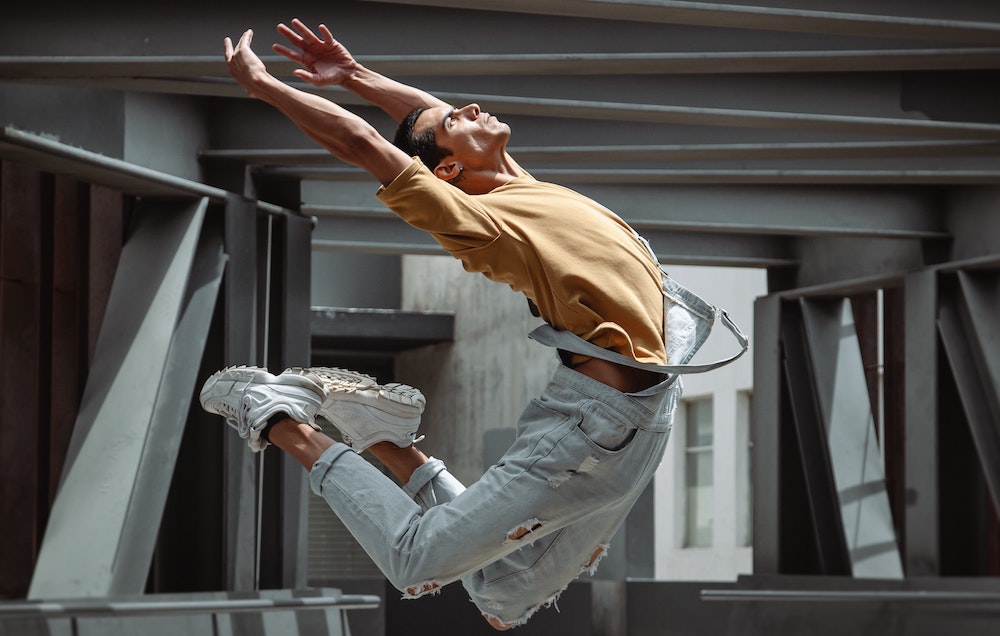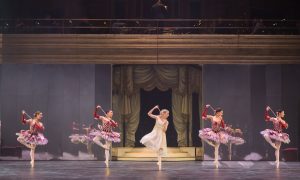As a kid, dance was always a source of joy and comfort for me. It truly is a universal first language, giving us the opportunity to express ourselves before words are accessible and later when they simply aren’t enough. As I got older, however, dance did not always provide the respite from anxiety, but often became the source of it. The need to perfect choreography or my technique mixed with my own inability to manage personal expectations as I compared myself to others in my classes. The overwhelming stress leading up to and during a performance was enough to make me question whether or not I even wanted to pursue dance as a career.
Sometimes, the anxiety we bring to the studio is exacerbated and not necessarily welcome or at the very least acknowledged. The cliché, “leave your problems at the door,” comes to mind. All too often, the body which is designed to signal when emotions are becoming distressful gets silenced, leading an already taxed system into the patterns of fight, flight or freeze.
For many individuals outside of the dance world, dance is a way to blow off steam, release stress, and escape from fears or worries. But for others, including those who have dedicated their lives to the art of dance, it can be a great source of overwhelm, pressure and emotional distress. Whether it is an individual living with anxiety stemming from outside the dance studio or a direct response to it, dancing with anxiety is challenging.
Now, as a dance/movement psychotherapist, I understand that feelings of fear, anxiety, worry and pressure lead to constriction in the body. When the body is constricted, not only does it make it harder to move and express ourselves, but it also increases the likelihood of injury and dis-ease.
Nerves, performance anxiety and worry aren’t new concepts to the dance community. But what can be done when the anxiety extends beyond the studio? And how can we learn to manage the anxiety that occurs as a direct response from engaging in the very art we also find meaningful and affirming? Here are five ways to support dancing with anxiety.
#1. Manage expectations on and off the dance floor.
It can make a huge difference in how much anxiety we experience when we learn to manage expectations. This means how much we can handle emotionally, execute physically and endure socially. Remember that overwhelming emotional distress can easily lead to physical injury which influences our ability to dance. Setting realistic goals, understanding our own limits, and practicing self-care can allow us to reduce the emotional pressure.
#2. Leave time for rest and recuperation.
As hard as it can be to take a break, especially when others around us aren’t or refuse to stop, this is another surefire way to reduce the buildup of stress and tension that accompanies anxiety. Additionally, taking time for rest not only does wonders for our muscles but also leaves time to notice and manage the anxiety we may be experiencing. Dealing with it as it arises as opposed to continuing to push it aside, deny it, or escape from it, allows us to cope and regulate.
#3. Move for fun, not just for performance.
This can be challenging because somewhere along the way, we may have lost the ability to see dance as fun. When it becomes our livelihood, this often clouds the original feelings of why we started dancing in the first place. Finding ways to move for pleasure, whether it’s yoga, walking or socializing with friends, moving our bodies in ways that prioritizes ease, comfort, pleasure and joy can be a strategy that bring balance to mind and body.
#4. Build a robust movement repertoire.
When we learn to move our bodies in new and unfamiliar ways, we build resilience which means we can also learn to manage our emotions under stress. This means challenging the pace, rhythm, timing, speed, space, and effort or flow of our movements. This is challenging for many dancers as they become accustomed to certain styles or ways of dancing. Try a new dance form, movement practice or exercise to build a more robust repertoire.
#5. Talk about it.
Ironic as it may be for a dance/movement therapist to tell you to “talk” about it, nevertheless, talking about feelings can have a huge impact on your emotional landscape. Keep in mind that “talking” about doesn’t necessarily mean verbally. There are many ways we can express our emotions: through music, dance, art, drama or poetry. Finding a mental health professional who can support your emotional needs, validate your experience, and provide coping strategies can have a huge impact on your mood and mindset on and off the dance floor.
At the end of the day, it is important to reframe the relationship between dance and anxiety. Dance, outside of the art form, is rhythmic body movement that expresses an idea, a thought or emotion. Essentially, dancing allows us to express the anxiety we may be experiencing. So, perhaps it is more valuable to learn how we can dance with anxiety rather than through it. Only after we learn to become curious about the anxiety, can we truly learn to dance with it and find a way through it.
By Erica Hornthal, LCPC, BC-DMT, Dance/Movement Therapist, Chicago Dance Therapy.
Erica Hornthal, known as “The Therapist Who Moves You,” is a board-certified dance/movement therapist and licensed clinical professional counselor. She is the founder and CEO of Chicago Dance Therapy and the author of Body Aware: Rediscover Your Mind-Body Connection, Stop Feeling Stuck, and Improve Your Mental Health through Simple Movement Practices.














